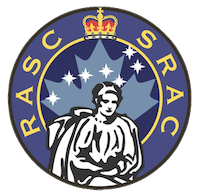Wilhelmina Iwanowska was born in Wilno, Poland, where she studied mathematics at the University, obtaining her D.Sc. degree in astronomy in 1933 and a Docent in 1937. She had been working at the Wilno Observatory, however, since 1927.
In 1945 the staff of the Wilno Observatory was transferred to Torun, the birthplace of Copernicus, as part of the new Nicolaus Copernicus University. With Professor W. Dziewulski, her former teacher, Professor Iwanowska began the organization of a new Astronomical Institute at Torun and was named its Director in December 1952. In 1973 there were 30 scientists working at the Institute, most of them students of Dr. Iwanowska. She was still an observing astronomer, conducting an active research program with her staff and publishing many original papers in astrophysics and stellar astronomy. Her main interests in the 1960s were stellar populations and the chemical evolution of our galaxy.
Professor Iwanowska was a visiting astronomer at many European observatories and also at several in the United States. She was a corresponding member of the Polish Academy of Sciences, a Fellow of the Royal Astronomical Society in London, a member of the Royal Society in Liege, and of the International Astronomical Society. She was a member and chief delegate for Poland of the International Astronomical Union and the Chairma of the Polish National Committee for Astronomy.
Dr. Iwanowska spent the full month of January 1973 in Canada as a guest of the National Research Council, the Canadian National Nicolaus Copernicus Quincentenary Committee and the Royal Astronomical Society of Canada. She visited twelve cities across the country (Halifax Jan. 2 & 3, Montréal, Ottawa Jan. 8, Kingston, Toronto Jan. 12 & 13, Winnipeg Jan 15, Saskatoon, Calgary Jan. 18, Vancouver and Victoria Jan. 22 & 23, Edmonton Jan. 28, and later, on April 17, Windsor) where she gave lectures on astronomy and the life and work of Copernicus, In each city she spoke to RASC audiences and frequently also at other public meetings. In Winnipeg, 1973 was also the year of the dedication of a special outdoor solar telescope next to the Manitoba Museum Planetarium, dedicated to Copernicus. Iwanowska's tour served in a rather unusual way to knit together the far-flung Centres of the RASC. As a result, Dr. Iwanowska became probably better known to our membership than any of the existing Honorary Members. During her visit, money was raised from across Canada to fund the acquisition of a Harvey Richardson spectrograph for the observatory in Torun, to be tested at the Dominion Astrophysical Observatory. ("A Small Off-Axis Spectrograph", Richardson, E.H. & Brealey, G.A. JRASC Vol. 67 p.165-174.)
In recognition of Dr. Iwanowska's stature in astrophysics and her service to Canadian astronomy, she was nominated on 1973-01-27 to be an Honorary Member of the Royal Astronomical Society of Canada, and was elected on 1973-09-22, which was seen as very fitting on the 500th anniversary of the birth of Copernicus.
Later that year, one week after the Congress of the International Astronomical Union in Sydney, Australia in August, a second Extraordinary assembly of the IAU convened in Poland to mark the Copernicus anniversary, due in large part to Dr. Iwanowska. A selection of seven honorary degrees were awarded to distinguished delegates, including Dr. K.O. Wright, director of the Dominion Astrophysical Observatory. The unusual nature of the extra assembly was more suitable to the attendance of delegates from Eastern Bloc countries, but the decision was a controversial one.
Professor Iwanowska passed away on May 16, 1999 at age 93. ( http://adsabs.harvard.edu/abs/1999JRASC..93..151. ) The asteroid (198820) Iwanowska is named in her memory.

